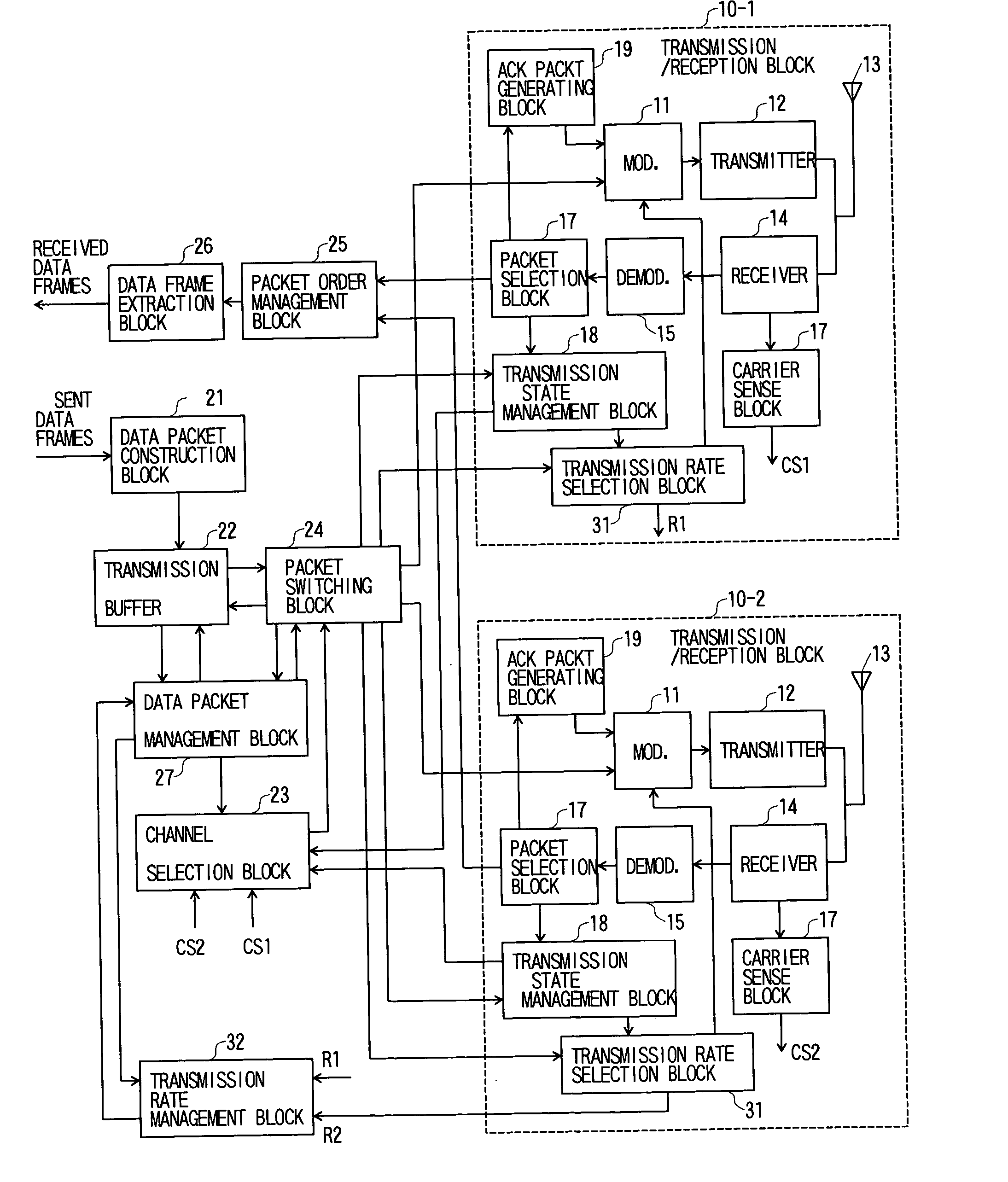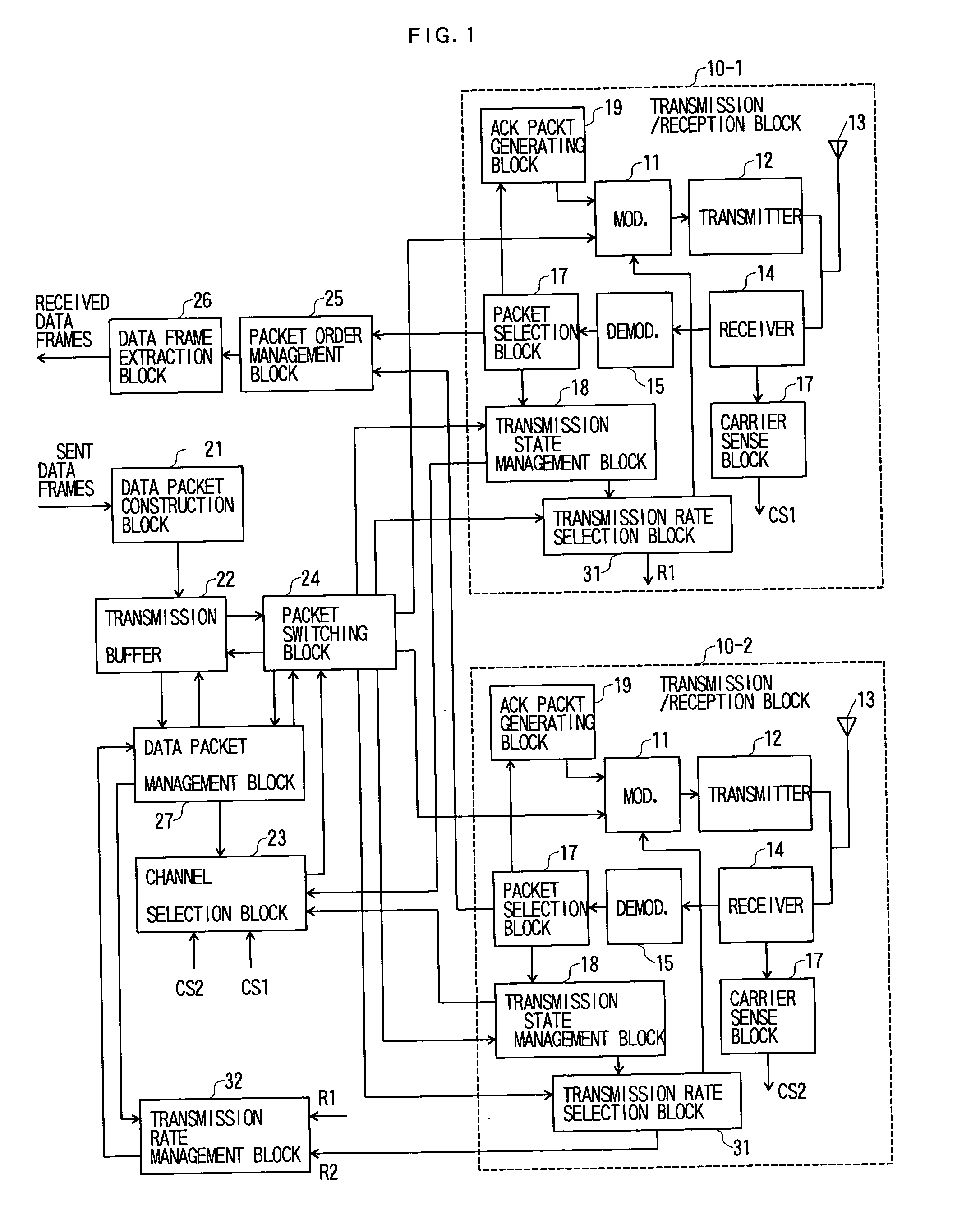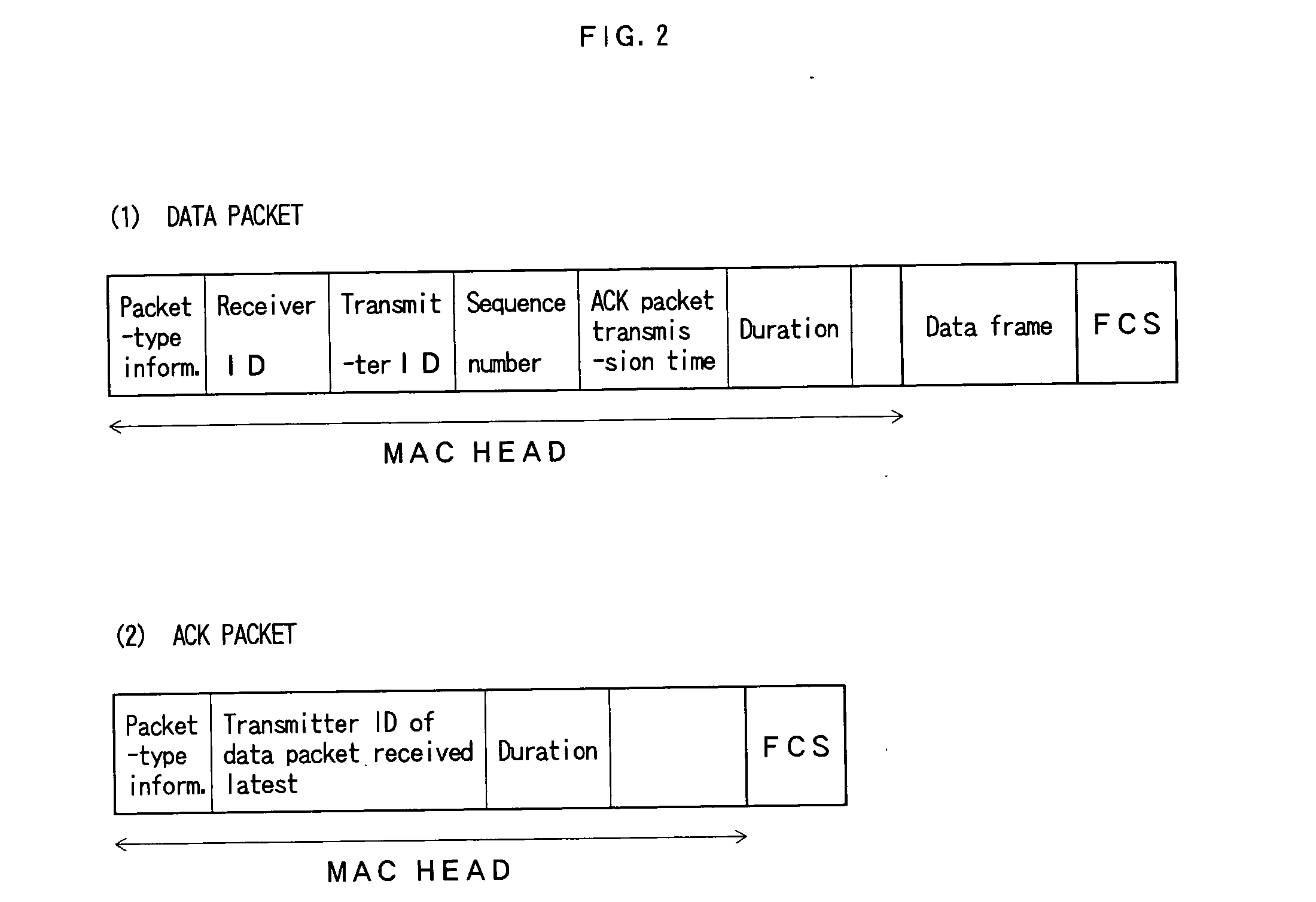Radio packet communication method and radio packet communication apparatus
a radio packet communication and radio packet technology, applied in the field of wireless packet communication, can solve the problems of large leakage power into the frequency band used between one radio channel and the other radio channel, problems such as leakage power from other radio channels where packets are transmitted simultaneously, and achieve high-quality communication, improve effective throughput, and facilitate communication
- Summary
- Abstract
- Description
- Claims
- Application Information
AI Technical Summary
Benefits of technology
Problems solved by technology
Method used
Image
Examples
Embodiment Construction
[Configuration Example of Wireless Packet Communication Apparatus]
[0061]FIG. 1 shows a configuration example of a wireless packet communication apparatus of the present invention. Here, it is assumed that data packets are transmitted through wireless links between more than three STAs. As these STAs, for example, radio base stations and radio terminals can be assumed, which constitute a wireless LAN system in conformity with IEEE802.11 standards.
[0062] In the drawing, the radio base station of the present configuration example includes a plurality of transmit / receive processing blocks 10-1, 10-2, . . . , a data packet construction block 21, a transmission buffer 22, a channel selection block 23, a packet switching block 24, a packet order management block 25, a data frame extraction block 26, a data packet management block 27, and a transmission rate management block 32. Each of the transmit / receive processing blocks 10-1, 10-2, . . . performs radio communication through radio cha...
PUM
 Login to View More
Login to View More Abstract
Description
Claims
Application Information
 Login to View More
Login to View More - R&D
- Intellectual Property
- Life Sciences
- Materials
- Tech Scout
- Unparalleled Data Quality
- Higher Quality Content
- 60% Fewer Hallucinations
Browse by: Latest US Patents, China's latest patents, Technical Efficacy Thesaurus, Application Domain, Technology Topic, Popular Technical Reports.
© 2025 PatSnap. All rights reserved.Legal|Privacy policy|Modern Slavery Act Transparency Statement|Sitemap|About US| Contact US: help@patsnap.com



